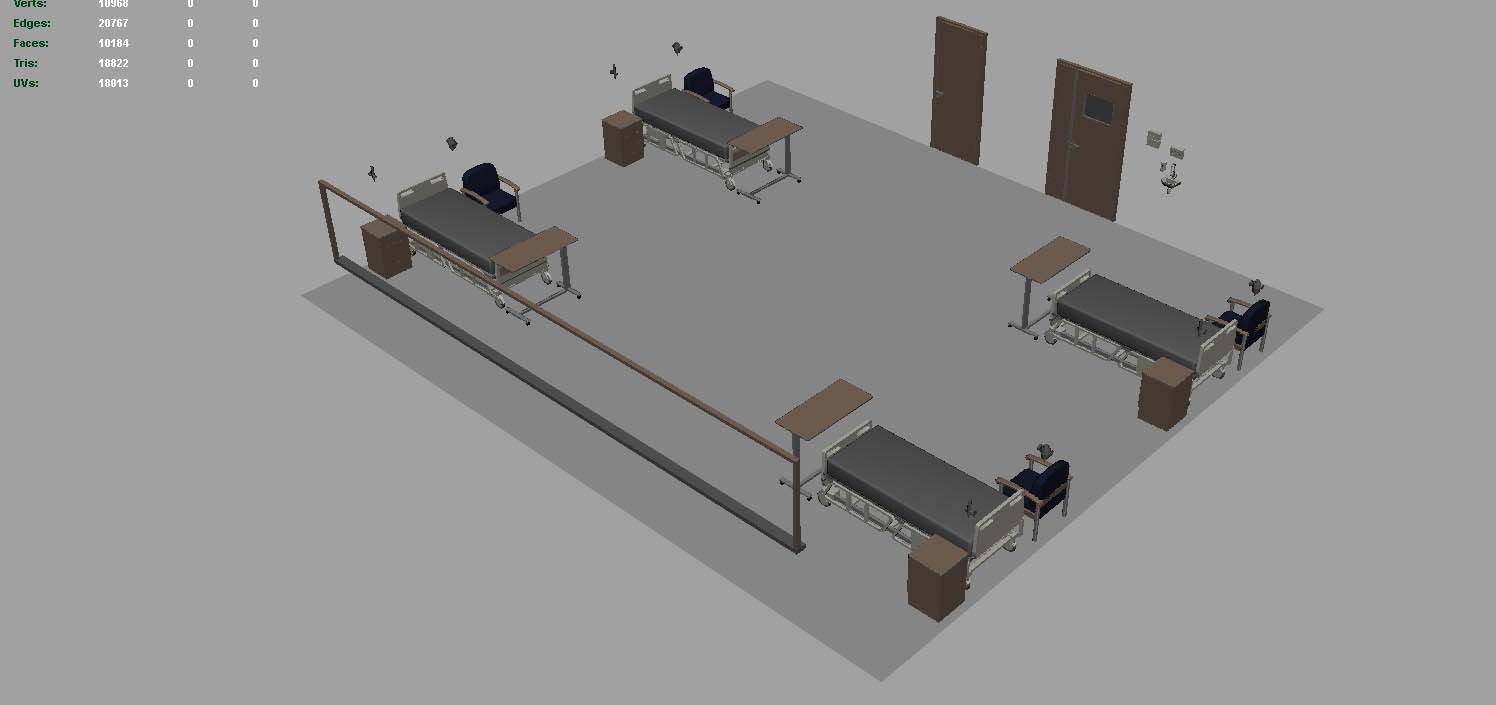Today I spoke to David on the phone and he is able to get a small amount of funding to get a prototype together.
After this we have emailed back and forth until we have all the information we require to put together an accurate scope document and quote.
Here is the scope document as pdf and also copied in below. It’s less detailed than usual because it’s only a small prototype, and we have also worked on a lot of hospital related projects before so there is no need to go into detail about many of the models/processes required.
PUBLICDHScopeDocumentandQuote-SimulatedHospitalSuiteDemonstration
| Client: |
David Holloway |
| Date: |
19/03/14 |
| Project Name: |
Simulated Hospital Suite Demonstration |
| Description: |
A demonstration web-based 3d simulated hospital suite environment for the future purpose of medications training for nursing students. |
| Development Time: |
3 weeks |
| Cost: |
|
Requirements and features:
As received via email from David;
- Approximate delivery date end of May 2014
- Keeping options open to publish to range of platforms (tablets).
- List of everything in room:
- Beds x 4
- Static avatars x 3 (male) in three of the beds
- Main avatar (male) in one bed close to window (a squarish room with four beds, two on north wall, the other two on south wall. West wall is windows out onto grass or trees (nothing fancy), East wall has a sink for handwashing, entrance door and off to the side a closed door to what would be the bathroom/shower. http://www.cgh.com.sg/Patients_Visitors/Admission/PublishingImages/classB1_large.jpg
- Oxygen outlet as per pic – one in each bed – http://www.fbe.com.au/AirGuard/AirGuard_files/Airg0.jpg (just the outlet on the left is fine, don’t need the three) – it sits at back of bed as per this pic – http://static.guim.co.uk/sys-images/Guardian/Pix/pictures/2011/12/29/1325155080700/An-empty-hospital-bed-in–007.jpg
- Suction outlet as per pic here – one in each bed – http://www.independent.co.uk/incoming/article8709167.ece/BINARY/original/Hospital_bed.jpg – it’s the tubing and container at the left of bed lower down.
- Bedside table, one for each bed on right side (as per http://static.guim.co.uk/sys-images/Guardian/Pix/pictures/2011/12/29/1325155080700/An-empty-hospital-bed-in–007.jpg ) with a chair on the left side of the bed (so suction outlet will need to be higher up so chair doesn’t block it)
- A sample script with three sets of dialogue, each with three options for nurse and patient (all are sequential so the first nurse one links to the first patient one etc):
First dialogue:
Nurse: Hello Mr Smith, how are you feeling / Hi Frank, how’s things? / Hello, I’m here to check your medications
Patient: Hello, I’m doing ok thanks / Have we met? / Ok, are you a nurse?
Second dialogue:
Nurse: I’m just going to review your medications / It’s 10am so it’s medication time / Ready for your pills?
Patient: I seem to rattle with pills / Already? I only had some a couple of hours ago / I’ll need some more water please.
Third dialogue:
Nurse: Do you understand the pills you are taking? / They’re due at 10am, I just checked / No problems, I’ll grab you some water
Patient: I know I take a heart pill.. / Ok, but it seems a bit soon… / Are there any biscuits too?
Online example:
An similar example of a virtual hospital room (made by Oztron for CIT) can be found here;
http://cit.oztron.com/guest/
�
Work Summary:
|
Development Notes |
| Implementation: |
Creation and animation of 4 characters.
2 weeks
This would include the user interface and chat system
1 week
- Scoping/management/administration
This is necessary to ensure the project runs smoothly and includes communication between Oztron and David Holloway in regards to the scope of the project and ongoing changes.
4 hours
Testing the system across a wide range of platforms and supporting initial use.
2 hours |
Quote:
| Item |
Time |
Cost |
| 3d design
Unity programming
Scoping, management, admin
Testing & support |
80 hours
40 hours
4 hours
2 hours |
|
| Total technical development: |
86 hours |
|
| GST |
|
|
| TOTAL: |
|
|




